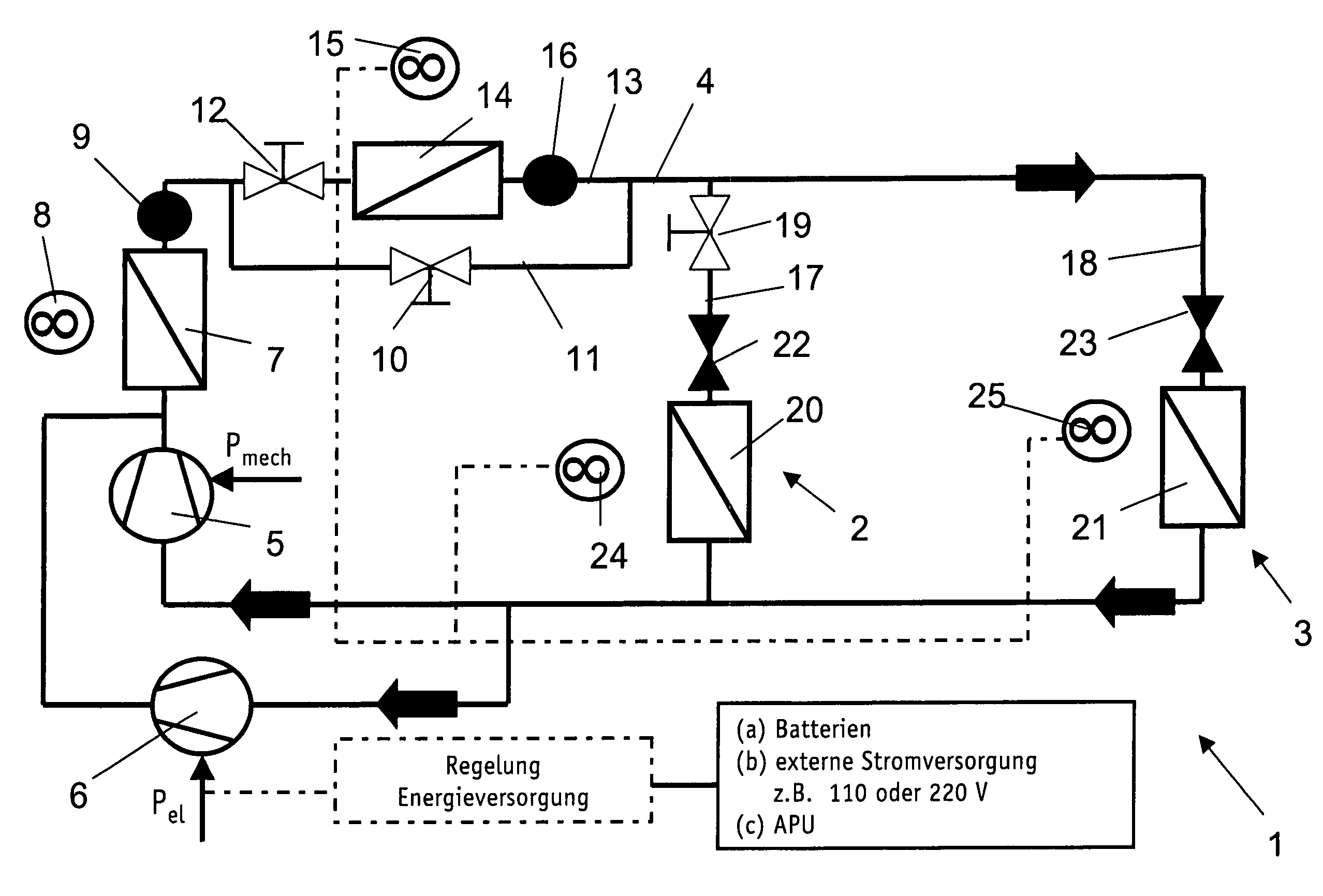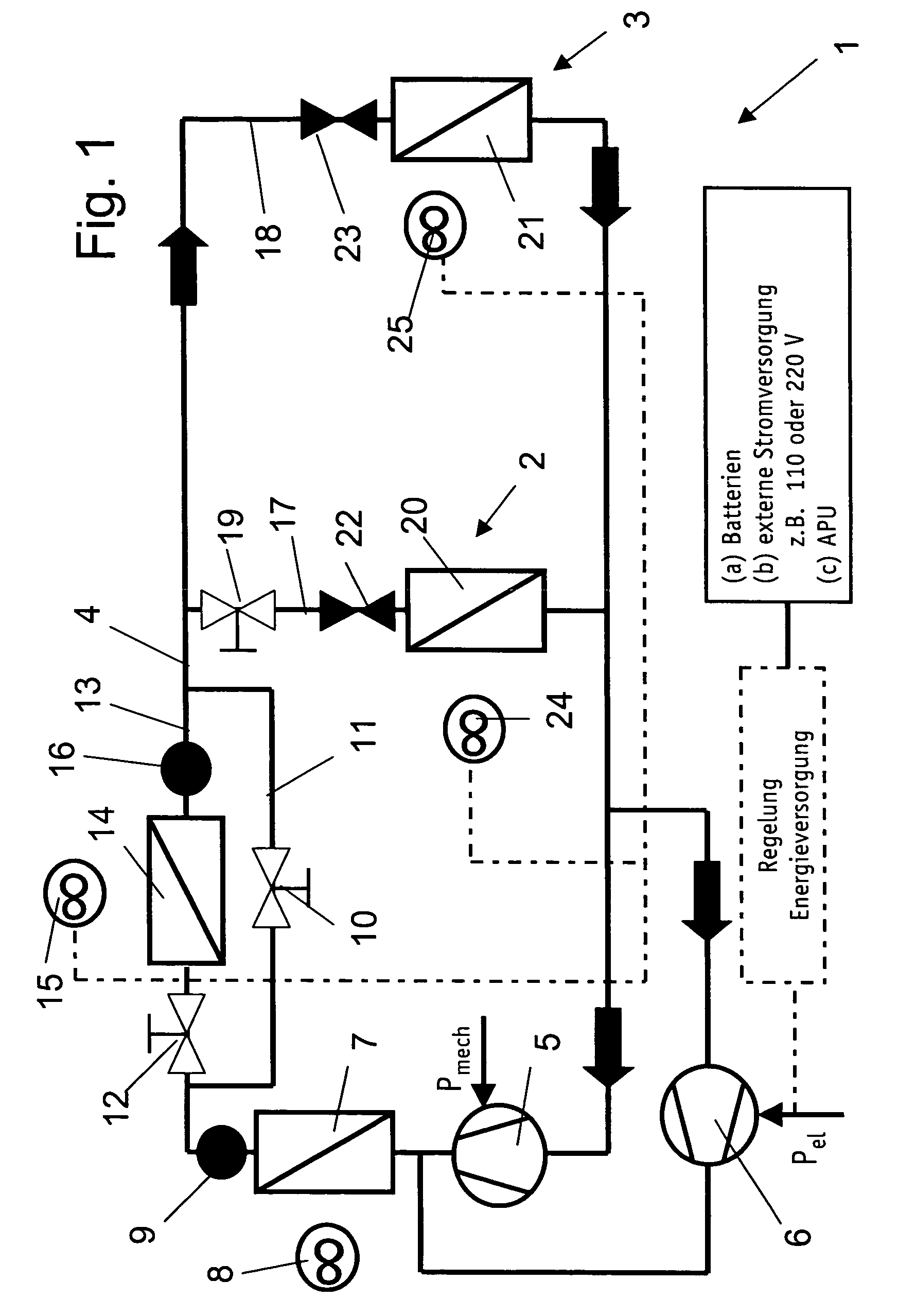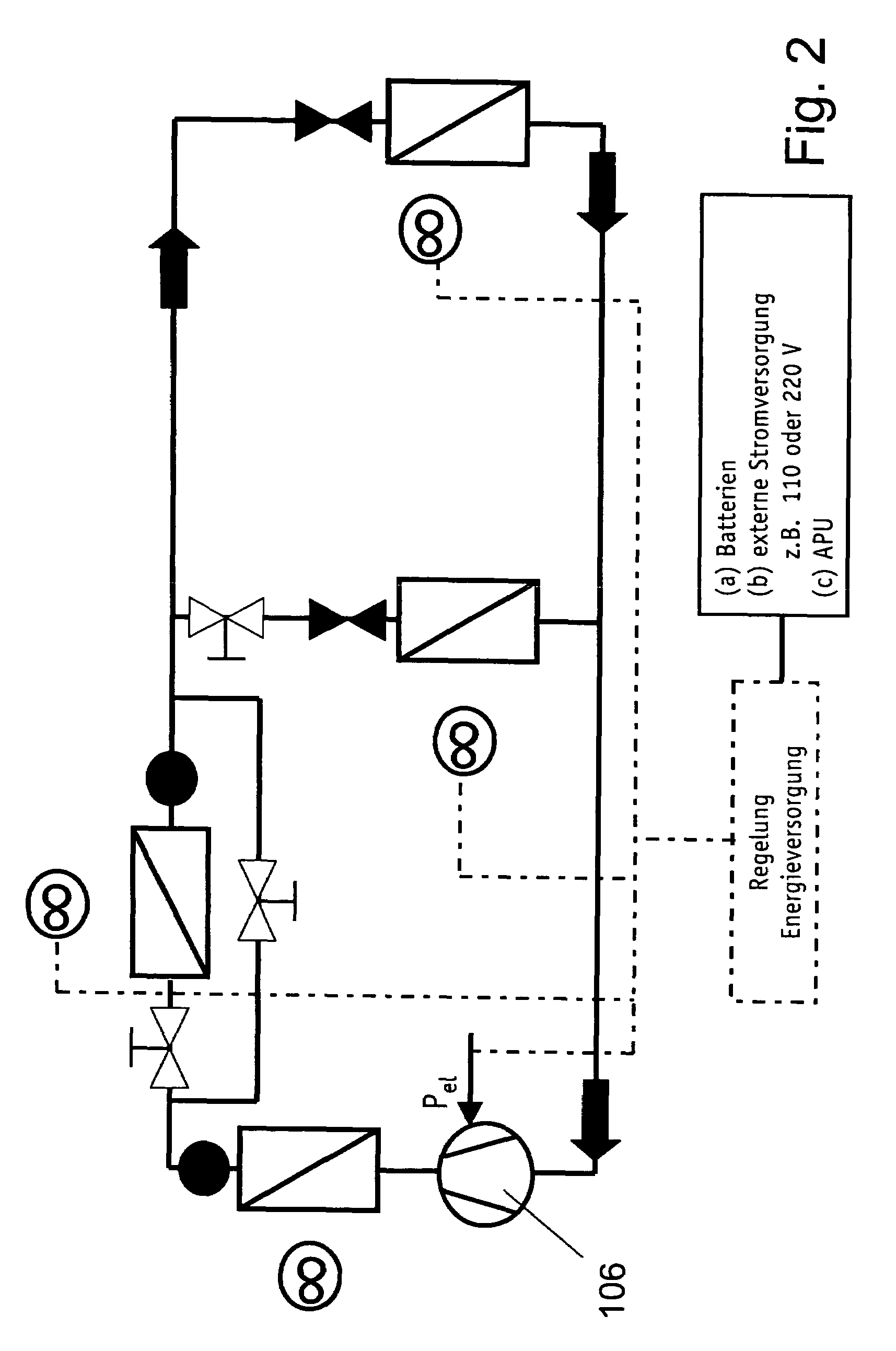Stationary vehicle air conditioning system
a technology for cooling systems and stationary vehicles, applied in compression machines with several condensers, light and heating apparatuses, transportation and packaging, etc., can solve the problems of cooling systems that typically require undesirable charging time, components that do not permit the cooling system to operate in an optimal manner, etc., and achieve the effect of optimizing cooling performan
- Summary
- Abstract
- Description
- Claims
- Application Information
AI Technical Summary
Benefits of technology
Problems solved by technology
Method used
Image
Examples
first embodiment
[0027]In the invention, as illustrated in FIG. 1, two compressors 5 and 6 are arranged in parallel branches of refrigerant circuit 4. In order to prevent backflow when second compressor 6 is not running, a check valve (not shown) is arranged in the corresponding branch of refrigerant circuit 4, downstream of second compressor 6 in the direction of refrigerant flow. A matching check valve can also be provided in the other branch downstream of first compressor 5.
[0028]The flow of refrigerant through circuit 4 in “normal” operation, i.e., with the vehicle's engine running, will be described first. Compressor 5 drives refrigerant, which is hot as a result of compression, through a first condenser 7 that is cooled by air via a first vehicle-engine driven fan 8. Condenser 7 may be further cooled by wind or by an air stream generated through the motion of the vehicle. Downstream of condenser 7, a first receiver 9 is arranged to collect and temporarily store excess liquid refrigerant. Downs...
second embodiment
[0033]FIG. 2 illustrates a In this embodiment, only a single electrically driven compressor 106 circulates coolant both in normal operation and as needed in stationary operation. This single compressor replaces the parallel branches with mechanically driven compressor 5 and electrically driven compressor 6 of FIG. 1. The circuit thereafter operates as described above.
[0034]FIG. 3 illustrates yet another embodiment in which a hybrid compressor 205 / 206, which can be driven both mechanically by the engine and electrically, may be substituted for the single electrical compressor of FIG. 2. In normal operation, the running vehicle engine drives hybrid compressor 205 / 206, and, in stationary operation, an electrical source (such as batteries, an external power source or an APU) supplies power to compressor 205 / 206. In other respects, this embodiment is similar to the prior embodiments.
fourth embodiment
[0035]the invention is illustrated in FIG. 4. In this embodiment, the circuit 4 splits into two branches downstream of the junction of compressors 5 and 6. A first branch 411 can be closed off by a first valve 410, thereby forming a bypass to the second branch 413, which can be closed off by a second valve 412. In normal operation, first valve 410 is closed and second valve 412 is open, so that refrigerant flows through second branch 413 and thus through condenser 7, and, subsequently, through condenser 14.
[0036]In contrast to the first embodiment, the refrigerant circuit in FIG. 4 does not include a bypass for second condenser 14. Furthermore, receiver 16 is only arranged downstream of second condenser 14. Electrically driven fan 15 supplies cooling air receiver 16, but no air is needed nor supplied to a second receiver, such as receiver 9 in the embodiment of FIG. 1.
[0037]By reference to FIG. 4, the flow of refrigerant during normal operation will now be described. First compresso...
PUM
 Login to View More
Login to View More Abstract
Description
Claims
Application Information
 Login to View More
Login to View More - R&D
- Intellectual Property
- Life Sciences
- Materials
- Tech Scout
- Unparalleled Data Quality
- Higher Quality Content
- 60% Fewer Hallucinations
Browse by: Latest US Patents, China's latest patents, Technical Efficacy Thesaurus, Application Domain, Technology Topic, Popular Technical Reports.
© 2025 PatSnap. All rights reserved.Legal|Privacy policy|Modern Slavery Act Transparency Statement|Sitemap|About US| Contact US: help@patsnap.com



